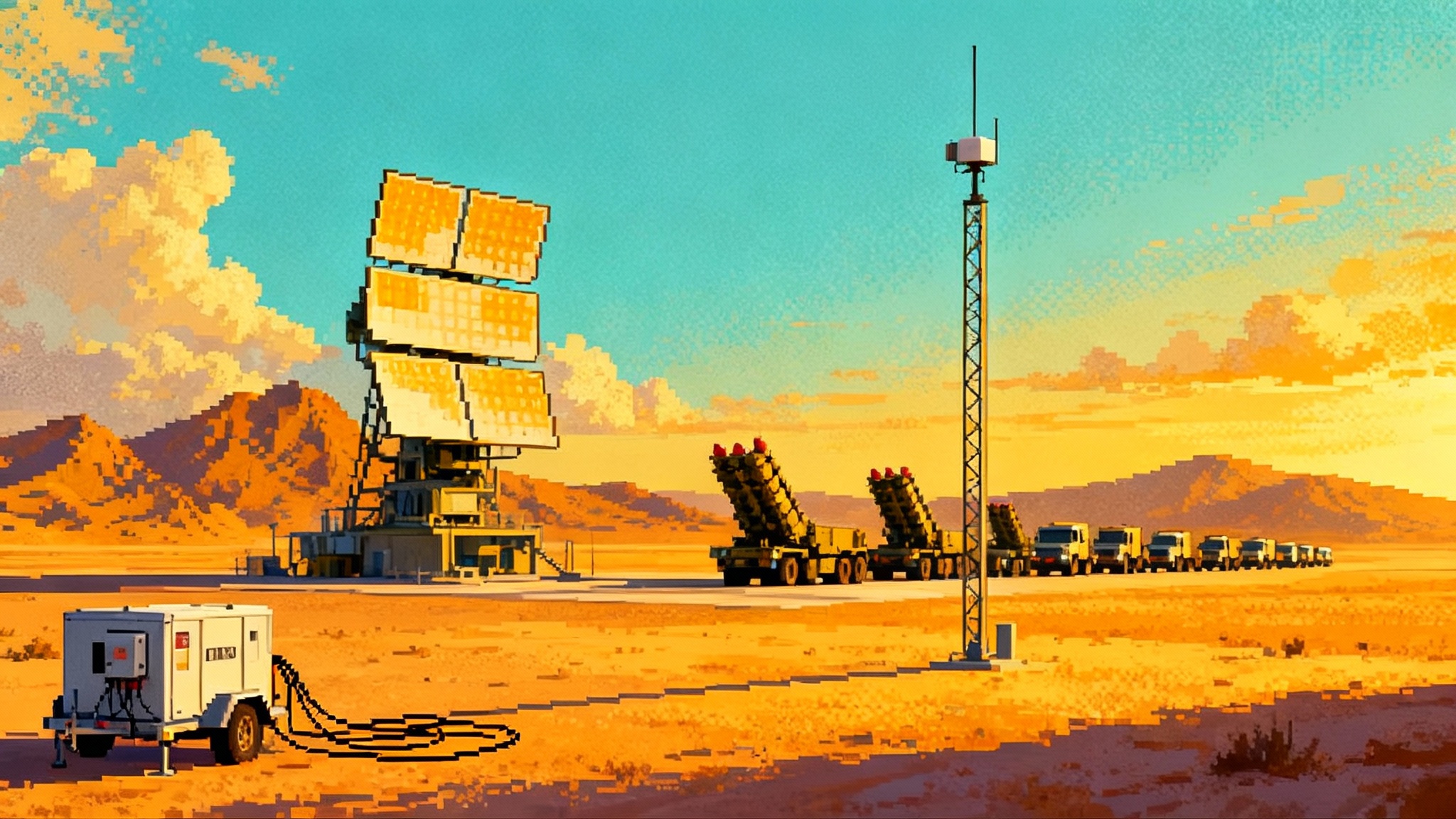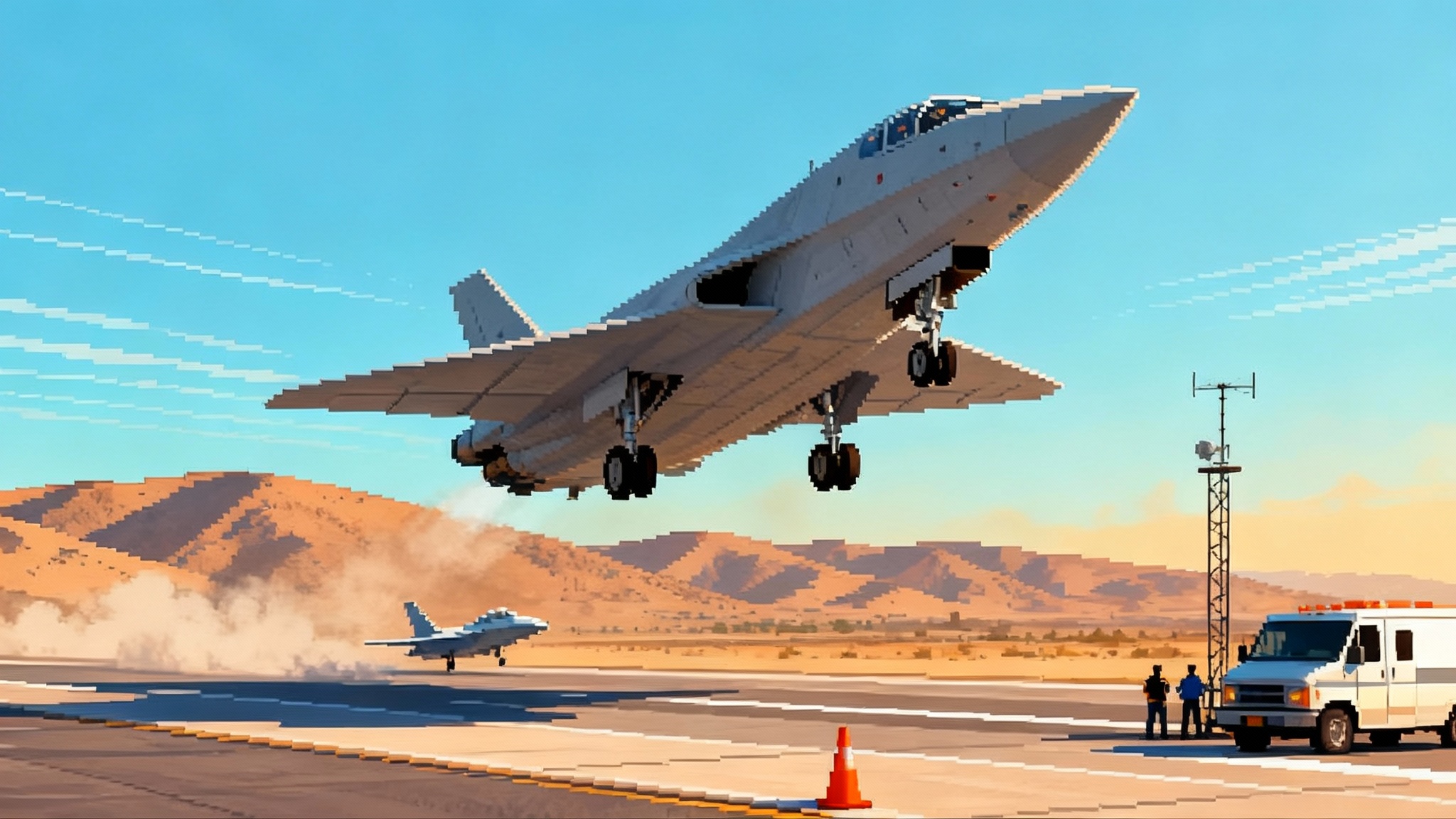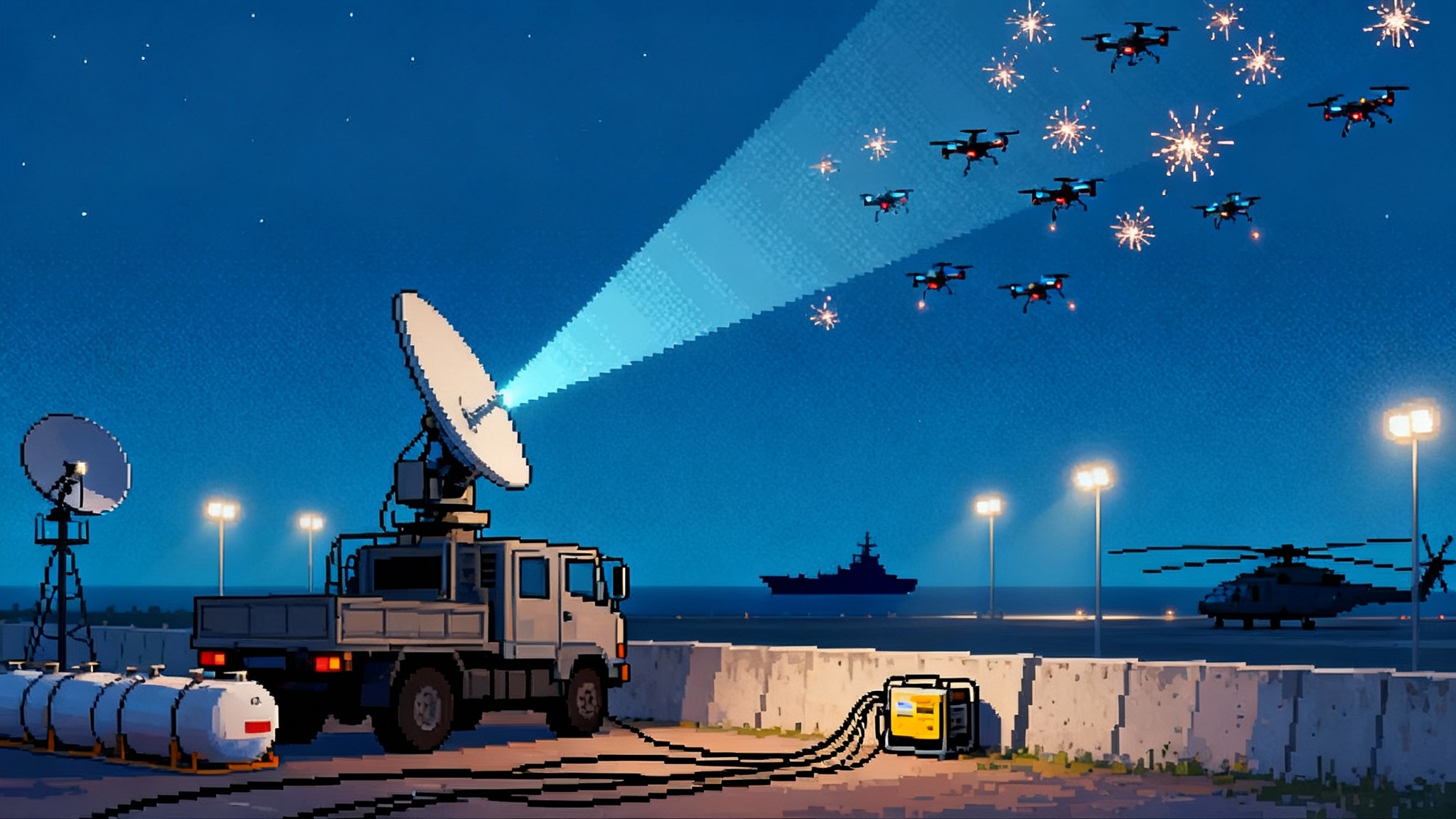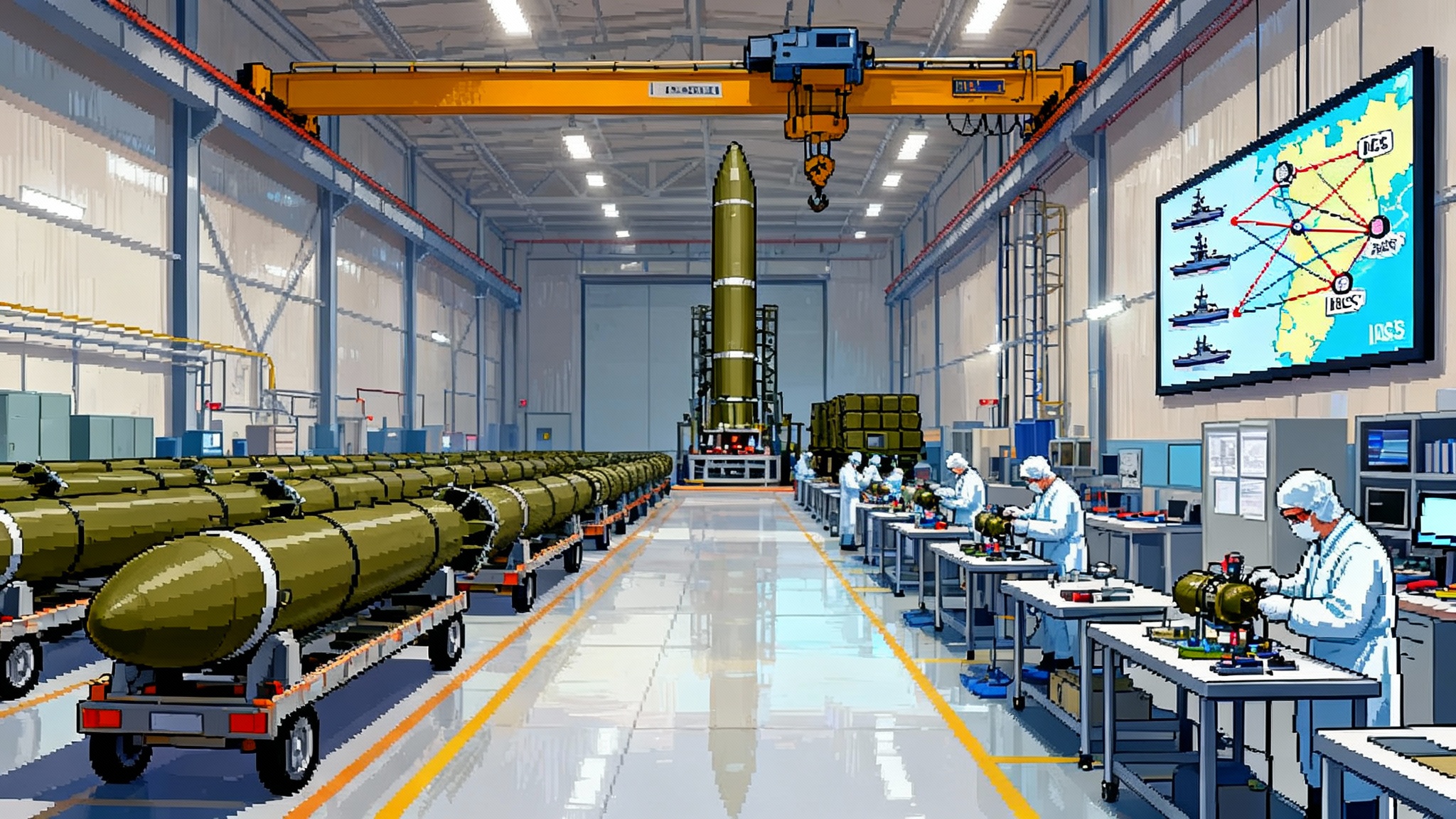Patriot’s 360° LTAMDS Radar Enters Production After Test
On August 14, 2025 the U.S. Army used LTAMDS and IBCS to intercept a threat from behind the battery, then moved to a $1.7B production award with Poland as the first international buyer. Here is why 360-degree coverage tied to IBCS changes Patriot from a sector defense to an all-azimuth kill web, and what to watch as fielding ramps from 2026 to 2029.

Breaking through the blind spot
On August 14, 2025, at White Sands Missile Range, the U.S. Army finally did what Patriot crews have wanted for years. Using the Lower Tier Air and Missile Defense Sensor, or LTAMDS, the Army detected a threat behind the battery, fed the track into the Integrated Battle Command System, and executed a successful intercept. It was a 360 degree engagement, not a convenient head-on shot, and it is the moment when Patriot’s new radar stopped being a promise and became a capability. The Army captured the event in its official account of the test, which details the 360 degree engagement and the use of a Patriot Advanced Capability 3 Missile Segment Enhanced interceptor guided through IBCS. See the Army’s test summary. The PAC-3 line that enables this engagement is part of a broader PAC-3 production surge.
Less than six weeks later the program crossed the next threshold. The Army awarded a production contract valued at 1.7 billion dollars, a decision that included Poland as the first international customer. RTX’s statement on the award marks the transition from development to manufacturing. Together, the August 14 intercept and the late summer contract award set the stage for fielding through 2026 to 2029 and beyond.
Why 360 degrees changes the fight
Legacy Patriot batteries used a powerful but sectorized radar. Think of it like guarding a stadium with a spotlight. The beam is bright and precise, but if a target slips behind the tower, the crew must swivel the light, or set up another tower, or risk a blind spot. That geometry has been the Achilles’ heel in an era of low flying cruise missiles, small drones that can circle to the back of a battery, and ballistic threats that can cue decoys and debris from unexpected angles. A radar that sees all around is not a convenience; it is a survival feature.
LTAMDS answers that with a continuous picture around the radar. A 360 degree view helps crews manage mass raids where attackers try to split attention. Instead of rotating the sensor or maneuvering the entire battery to cover a new azimuth, the radar can hold multiple beams on multiple parts of the sky at once. That buys precious seconds, and seconds are everything when a swarm of drones is coming in at treetop height while a cruise missile rides the valleys. This is the building block for a joint kill web, as explored in Guam missile shield kill web.
What GaN AESA really buys
LTAMDS is a gallium nitride active electronically scanned array. Gallium nitride, often shortened to GaN, is a semiconductor material that handles higher power more efficiently than the older gallium arsenide. That means more transmitted energy per module, more sensitivity on receive, and less waste heat to manage. Active electronically scanned arrays use thousands of tiny transmit and receive elements. Instead of moving a dish mechanically, they steer each beam by changing the timing and power of these elements in software.
The practical effect is like replacing a single zoom lens with an array of smartphone cameras that can look in different directions and at different distances at the same time. A GaN AESA can form several beams, dwell longer on tricky targets, and dynamically change waveforms to reduce clutter, peel drones away from birds, and keep tracks solid even when a target tries to hide in terrain or in chaff. The radar can also reserve time to check the back hemisphere or to revisit a fast climbing ballistic target, then return to the main raid without losing the plot.
The IBCS factor: every sensor, every shooter
Radar is only half the story. The Integrated Battle Command System is the network brain that ties sensors and launchers together. In the August 14 test, LTAMDS did not guide the missile by itself. LTAMDS detected and classified the target, IBCS fused the data, computed the firing solution, and passed commands to a Patriot launcher. That separation of roles matters.
With IBCS, crews do not need to keep a specific launcher married to a specific radar. Any connected launcher can engage a target tracked by any connected sensor. This is the difference between a pick-up basketball game and a practiced team that knows every player’s position in real time. The system supports shoot, assess, and shoot again against raids, and it can prioritize the most dangerous inbound objects while less threatening tracks are observed or jammed. The result is better use of interceptors, fewer unnecessary shots, and higher probability of defeating a complex attack.
Coverage without the footprint creep
A sector radar pushes users toward a daisy chain of overlapping fields of view. That expands the battery, complicates setup, and creates logistical seams. A 360 degree radar lets commanders shrink that footprint. One sensor guards all azimuths from the same position, which simplifies emplacement and reduces the number of prime movers, power units, and cables that must be protected and maintained.
This geometry also helps on the move. In high-threat areas, crews can orient the launcher where terrain allows while trusting that the radar will see threats no matter which direction the convoy is traveling. For expeditionary operations, fewer assets to move means faster arrival and fewer targets for enemy reconnaissance.
Faster upgrades, software-first growth
Because LTAMDS is an electronically steered array, many improvements arrive through software. Waveform changes, new classification models for small drones, better clutter rejection near wind farms, and improved discrimination of cruise missiles flying in formation are all updates that can be delivered without changing the hardware. Think of it as a radar that earns new skills by downloading a training plan.
This software-forward path is important for two reasons. First, the threat is changing quickly. Drone swarms are evolving, cruise missiles are using terrain masking and electronic deception, and ballistic missiles are adding complex countermeasures. Second, software increments can be tested and fielded faster than hardware refreshes. Units can receive quarterly or even monthly improvements that noticeably change how the radar performs in specific scenarios. Over a four year fielding window from 2026 to 2029, that cadence turns every deployed radar into a learning system that improves with operational feedback.
Poland goes first abroad, and why that matters
Poland is the first international buyer of LTAMDS and an early adopter of IBCS in Europe. That pairing means Polish forces can plug LTAMDS into their Patriot launchers and share tracks with other national sensors across the network. For NATO, common sensors and common battle management are the keys to creating a joint picture of the airspace, not just a patchwork of national bubbles.
On the industrial side, first-mover status usually unlocks early training pipelines, dedicated sustainment spares, and a seat at the table for software and mode priorities that reflect Polish geography and threat assessments. The value is not just the radars. It is the ability to influence how the system evolves, which modes are tuned and in what order, and how allied tactics and procedures are standardized for cross-border raids that may cross several countries in minutes.
From low rate to scale: the production path
The 1.7 billion dollar award signals low rate initial production has begun. Low rate production is where the factory learns at speed while the Army confirms the design and the sustainment model. The next milestone is full rate production, which relies on maturing the supply chain for GaN power amplifiers, transmit and receive modules, signal processors, and the specialized cooling hardware that keeps power density high without sacrificing reliability.
To scale, the program must do three things well:
- Harden the GaN supply chain. GaN performance comes from materials quality and repeatable fabrication steps. Any interruption ripple effects the entire build schedule. Second sources for wafers and modules, along with buffer stocks, will pay for themselves when demand spikes.
- Industrialize array assembly. Thousands of modules must be placed, soldered, and tested per radar face. Automated placement, rapid in-circuit test, and burn-in procedures need to run like a metronome. Yields and rework rates will define schedule credibility.
- Align test capacity with delivery cadence. Acceptance testing for a 360 degree radar is not a bench check. It needs outdoor ranges, calibrated targets, and time on instrumented test sites. Doubling factory output without doubling test throughput only moves the bottleneck.
Full rate production will also open doors for co-production agreements. For allies like Poland, that could mean local testing, integration work, cabling, or enclosure fabrication even if the GaN cores stay at specialized facilities. Co-production lowers long-term sustainment costs and anchors jobs and know-how inside the buying country, which tends to unlock parliamentary support for follow-on buys.
Fielding from 2026 to 2029: building the layered baseline
The Army’s next three to four years should be about fielding enough LTAMDS to replace the most vulnerable sector radars, training crews to fight the networked way, and proving how 360 degree coverage changes battery layouts for both homeland and forward defense. A layered defense works best when each layer knows what the others see. With LTAMDS tied to IBCS, a short range air defense battery can get early cues on low flyers. A Patriot battery can prioritize the most dangerous missile while a counter-UAS platoon cleans up small drones without wasting expensive interceptors. These network plays echo the architecture seen as the LEO battle network arrives.
During this period, the Army can also refine the playbook for mass raids. That includes setting preplanned threat sectors for the radar, allocating specific launchers to certain track types, practicing dynamic reallocation of shooters, and building an intercept conservation scheme that pairs kinetic shots with non-kinetic effects like electronic attack. A radar that sees in all directions makes these plays possible because it reduces the chance that a second wave appears from an uncovered corner.
Early hypersonic tracking in the 2030s
Hypersonic weapons compress time and maneuver in the upper atmosphere. Detecting and tracking them reliably is a space to ground problem that will rely on new satellites and very large radars. LTAMDS is not a silver bullet for hypersonics, but it can help with the lower tier of the engagement by providing early local tracks, refining cueing from space sensors, and maintaining custody as a threat descends into the envelope where Patriot class interceptors can work.
The interplay looks like this. A space sensor detects a hot object skimming the atmosphere and provides a coarse track. IBCS distributes that cue to all connected sensors. LTAMDS looks where it is told to look, confirms the object with its high power GaN beams, and updates the track with better accuracy and timing. If the threat maneuvers, the radar can keep up because it does not have to mechanically reorient. In the 2030s, this kind of cooperative sensing will be essential.
What could go wrong, and how to hedge
- Software integration risk. The same software-first path that accelerates capability can also introduce instability. Units should adopt a disciplined update rhythm that pairs major increments with focused regression testing and clear rollback plans.
- Parts and people. GaN components, cryogenic coolers, and high speed processors have global supply chains that are sensitive to demand spikes. The program should pre-fund long lead items, dual source critical parts where possible, and invest in cross training maintainers who can handle both legacy and new radars during the transition.
- Electronic warfare and cyber. A modern radar is a software defined radio with a large attack surface. Adversaries will probe the waveforms and the network. Blue teams should schedule red force jamming and cyber stress tests early and often, then feed those results into the next software drop.
- Training for the networked fight. It is tempting to celebrate the sensor and forget the system. Crews must learn to trust remote tracks, fight with distributed launchers, and coordinate multiple layers under IBCS. High tempo, multi-battery exercises with complex raid profiles should be a quarterly habit, not a once-a-year proving event.
Signals to watch between now and 2029
- Production cadence crossing from handfuls per quarter to double digits per year. When that happens, field units will feel the difference in coverage and confidence.
- Co-production announcements and sustainment sites in Europe. That would indicate allied demand is strong and the industrial base is diversifying.
- Software release notes that mention new counter-drone classification models, low altitude cruise missile improvements, or expanded electronic attack resilience. Those specifics show the radar is learning fast.
- Live fire events where multiple layers are linked through IBCS and work a mass raid together. When an exercise report mentions shared tracks and cross-battery engagements as routine, the architecture has matured.
The bottom line
The Army’s August 14, 2025 360 degree intercept was not a laboratory trick. It was a system test that showed the radar and the network can do what the mission demands. The September production award put money and momentum behind it. A 360 degree GaN AESA tied to IBCS is the inflection point because it turns blind spot management into all-around custody, swaps hardware lag for software pace, and scales from a single battery to a coalition network. If the Army and its allies push fielding from 2026 through 2029 with discipline on production, training, and software, LTAMDS will be the baseline radar for layered air defense in the 2030s, ready to help shoulder early hypersonic tracking and the next wave of complex raids. The technology is here. The task now is to scale it, teach it, and fight smarter with it.








